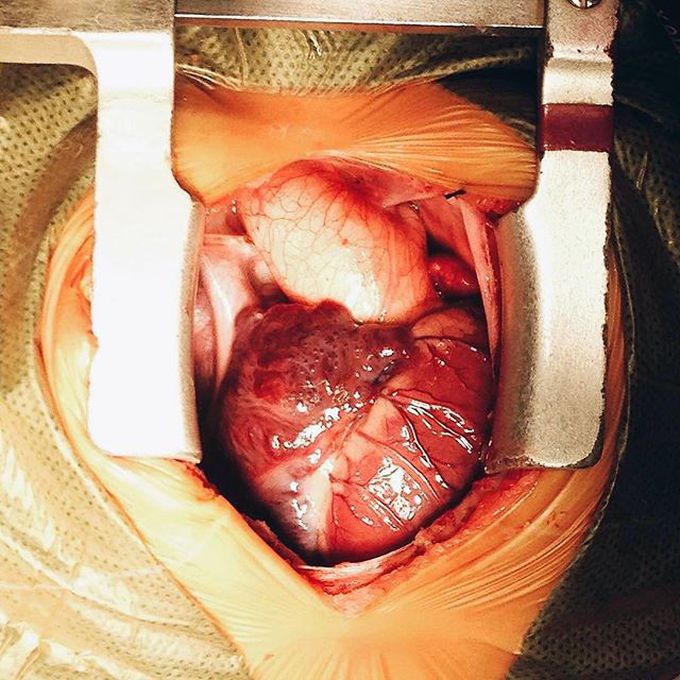


Surgical repair of a truncus arteriosus! Truncus arteriosus is an uncommon congenital cardiovascular anomaly that is characterized by a single arterial trunk arising from the normally formed ventricles by means of a single semilunar valve (ie, truncal valve). Normally, the aorta and pulmonary artery start as a single blood vessel, which eventually divides and becomes two separate arteries. Truncus arteriosus occurs when the single great vessel fails to separate completely, leaving a connection between the aorta and pulmonary artery, hence resulting in a persistent truncus arteriosus. In addition, the pulmonary arteries originate from the common arterial trunk distal to the coronary arteries and proximal to the first brachiocephalic branch of the aortic arch. The common trunk typically straddles a defect in the outlet portion of the interventricular septum (the conal septum); however, in rare cases, it may originate almost completely from the right or left ventricle. In patients with a patent and normal caliber aortic arch, the ductus arteriosus is either absent or diminutive. The defect must be treated by surgical repair. Photo by @scrubsallday
Hemodynamic stimuli&nonhemodynamic stimuliEffects of sugar on teeth

